When exposed to heat, the body activates several physiological mechanisms to maintain thermal homeostasis. However, these natural defenses are often overwhelmed in our modern cities. In an urban environment defined by heat-absorbing asphalt, concrete, and a lack of green spaces, these mechanisms become inefficient. If the surroundings are excessively hot, humid, or poorly ventilated—conditions amplified by the Urban Heat Island effect—the core body temperature begins to rise, and the risk of serious complications increases, ranging from cramps and exhaustion to potentially fatal heat strokes.
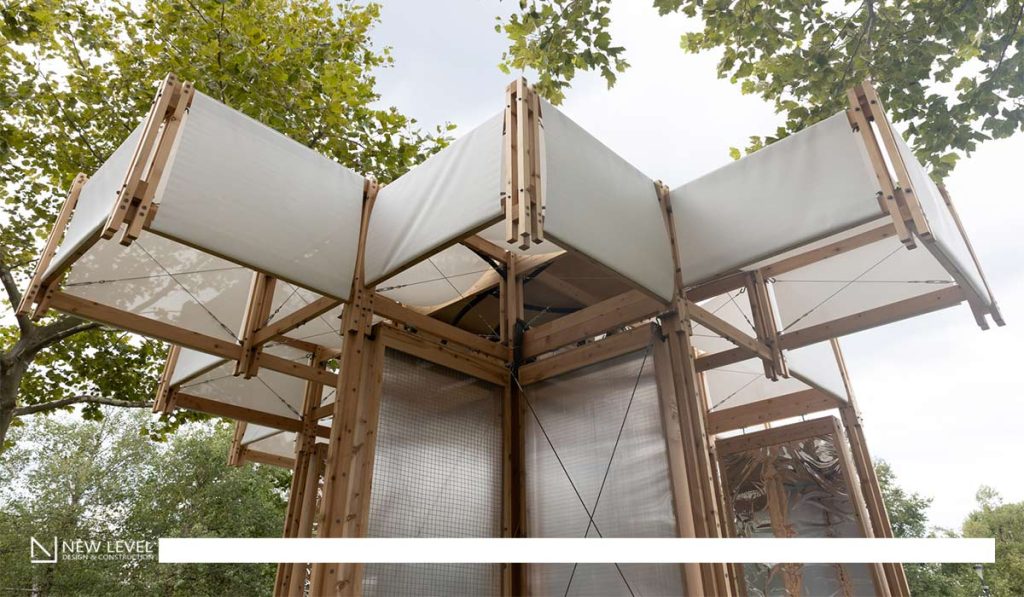
In recent years, the impact of this thermal stress has intensified, particularly in the dense urban centers of the Northern Hemisphere, which were historically less prepared for extreme temperatures. According to a study published in The Lancet eClinicalMedicine, between 2000 and 2019, there was an annual average of 489,000 deaths worldwide linked to extreme heat, highlighting the silent magnitude of this phenomenon. A recent analysis by Imperial College London estimated that during the European summer of 2025, two out of three heat-related deaths were a direct consequence of human-induced global warming — about 16,500 of the 24,400 recorded deaths. Both this and warnings from the World Health Organization reinforce the urgency of developing urban and architectural strategies capable of mitigating heat, protecting vulnerable populations, and reducing the growing burden of the climate crisis on public health.
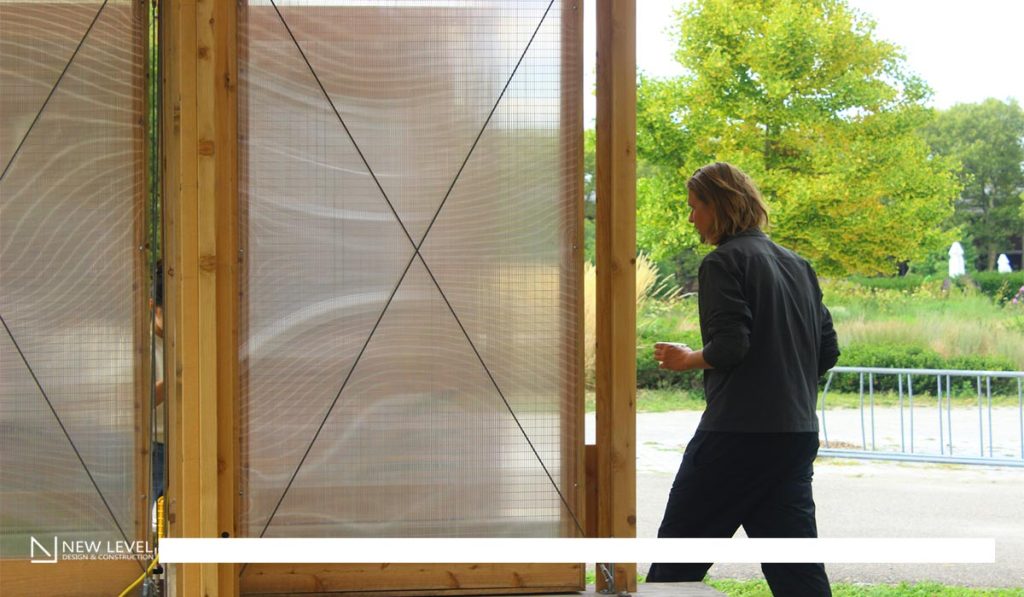
As global temperatures rise and cities densify, conventional air conditioning has become a paradoxical response to heat. While it cools interiors, it also consumes massive amounts of energy, releasing residual heat into the atmosphere, which further warms the urban microclimate. The solution also remains largely inaccessible to the communities most vulnerable to climate change. According to the International Energy Agency, the number of air conditioning units worldwide is expected to grow by another 1 billion by 2030, overloading energy supply and contributing to the very problem it seeks to solve. This scenario becomes even more critical when considering that most of the population growth by 2050 will occur in hot-climate countries near the equator, such as India, Nigeria, and the Democratic Republic of Congo, where the demand for cooling is most intense and the need for sustainable architectural solutions is paramount.
In response to this daunting scenario, Henning Larsen, in collaboration with the Thermal Architecture Lab at the University of Pennsylvania and AIL Research, developed the KlimaKover, a modular, low-energy system that provides real relief without cooling the air. “The way we cool our cities today isn’t sustainable. KlimaKover was designed to break that cycle, demonstrating a method of cooling people without cooling the air,” says Kritika Kharbanda, Head of Sustainability at Henning Larsen.
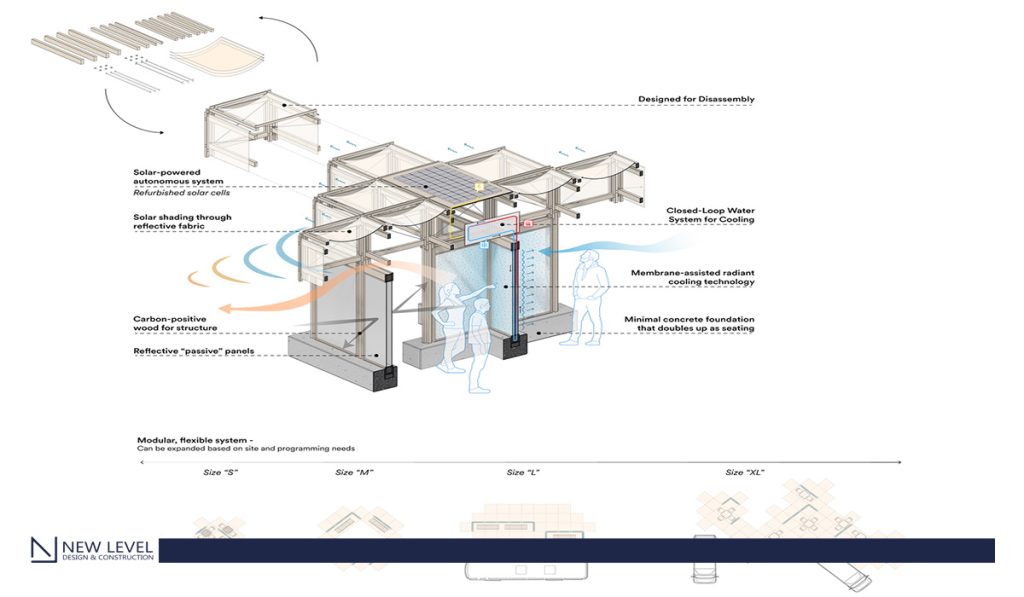
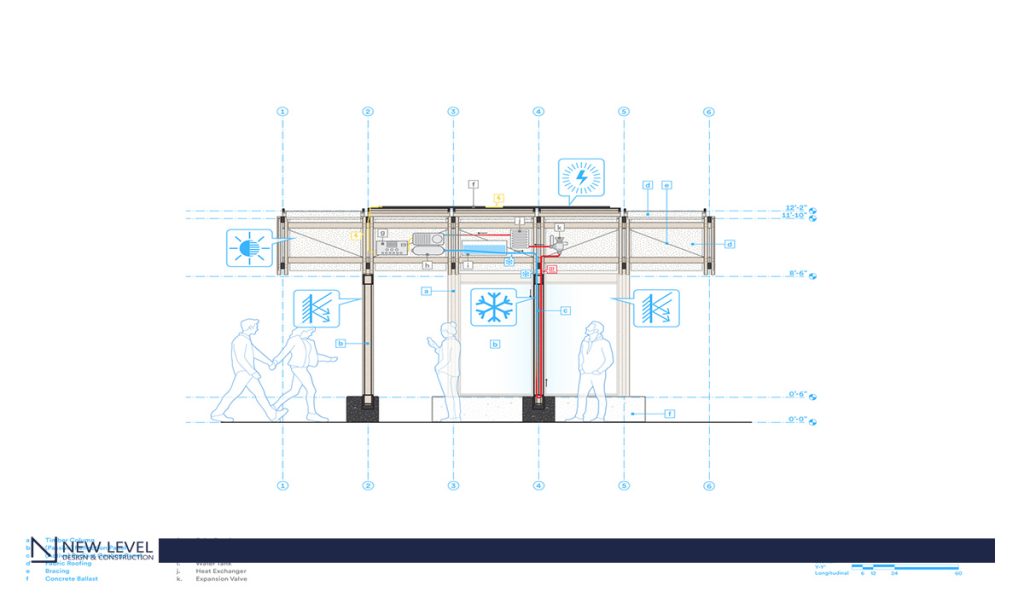
At the core of the initiative is membrane-assisted radiant cooling, an approach that replaces the mechanical reduction of air temperature with the direct cooling of the human body. The system uses panels with embedded microtubes that circulate chilled water, radiating coolness toward people and reducing thermal stress within minutes. “Research from our partners at the University of Pennsylvania shows that the panels start to cool your body within 5–7 minutes, when the effect becomes apparent, and by 20 minutes the cooling sensation is pronounced,” explains Kharbanda. To enhance performance, reflective mylar panels amplify the radiant effect, while a textile canopy provides shade and keeps the space permeable to natural ventilation. The main innovation, however, lies in the infrared-transparent protective membrane, which prevents condensation and ensures the system works even in hot and humid outdoor environments. Integrating this technology into a lightweight, mobile structure required close attention to materials and engineering: the panels were dimensioned to door-scale, maximizing surface area and, therefore, cooling efficiency.
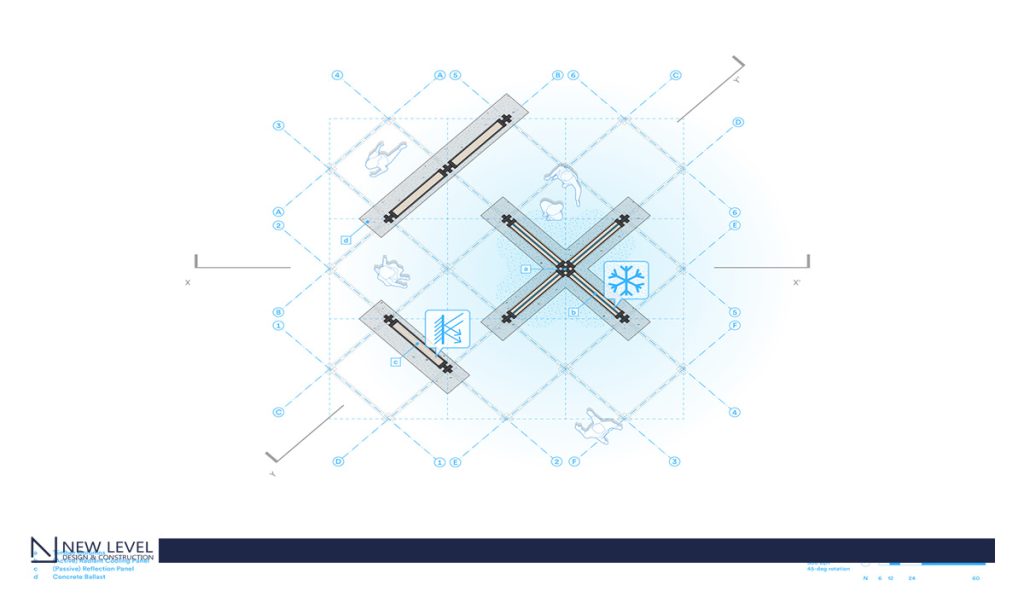
The impacts go beyond comfort. Heat waves disproportionately affect low-income communities and outdoor workers in construction, agriculture, and transportation. The number of people vulnerable to heat stress has more than doubled since the 1980s.
“This is a climate justice issue, not just a technical issue to solve; it’s about health, access, and equity. KlimaKover can be set up in a schoolyard, at a bus stop, or a construction site — anywhere people are at risk of heat stress.” — Kritika Kharbanda
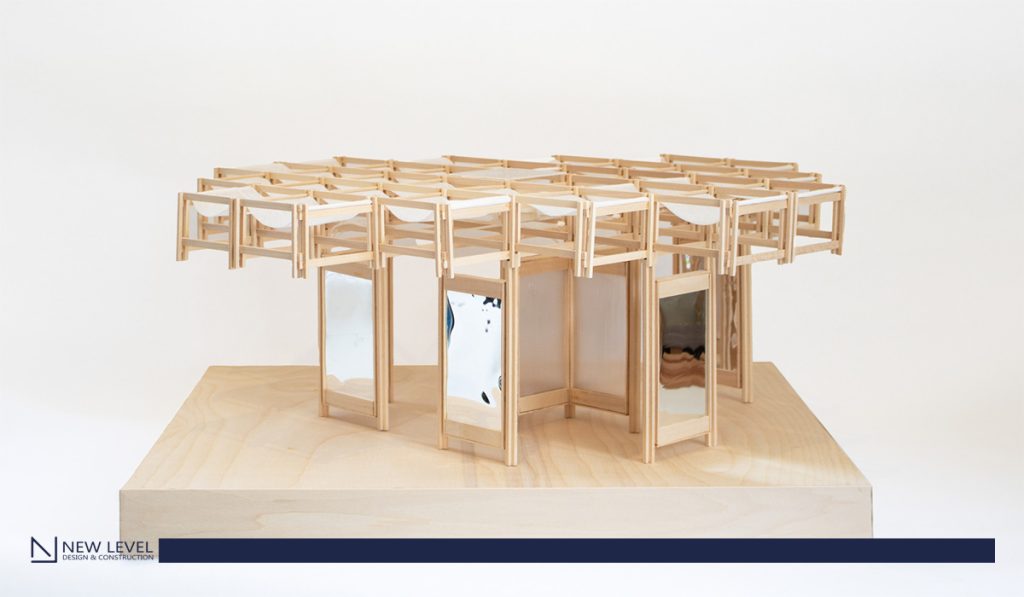
Compared to conventional air conditioning, KlimaKover consumes ten times less energy, a critical advantage considering that AC units currently account for nearly 10% of global electricity use and more than 1 billion tons of CO₂ annually. “KlimaKover shows how low-energy cooling can scale across cities without locking us into the same destructive patterns,” says Kharbanda. The 1.20 m x 1.20 m modules can be mass-produced for about $75 per square foot, run entirely on solar energy, and require no external water supply.
The first full-scale KlimaKover pavilion was inaugurated in 2025 on Governors Island, New York, with support from the Ramboll Foundation. Built with reclaimed cedar wood, the structure demonstrates how design, science, and sustainability can converge in a new kind of public infrastructure. “KlimaKover will allow visitors arriving from New York City and the world to experience outdoor cooling. This is an important demonstration, paving the way to the widespread adoption of low-energy cooling,” says Kharbanda.
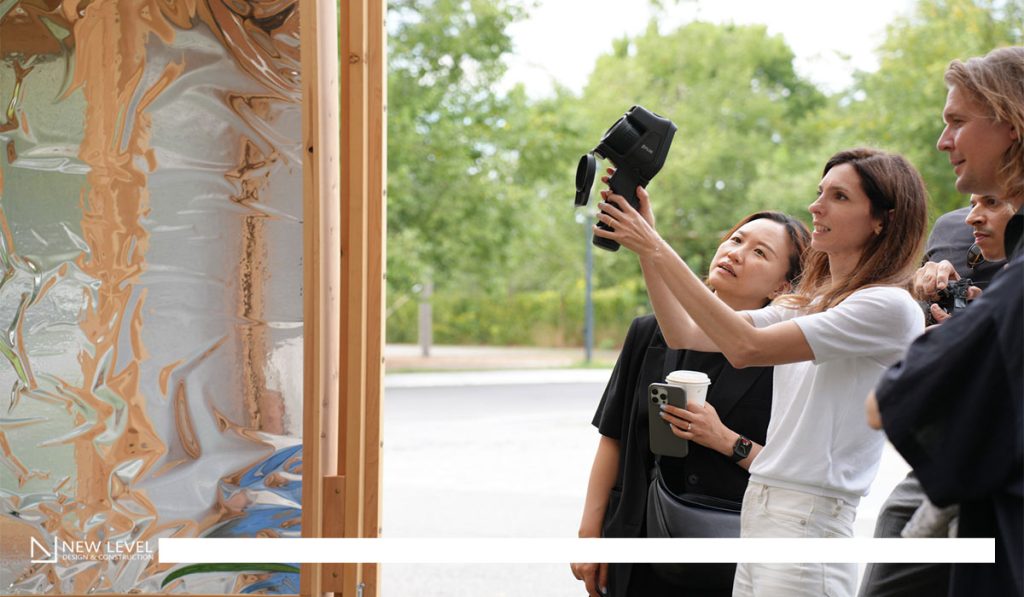
The installation will remain open until November 2025, with plans to travel to other cities in 2026 to test performance in different urban contexts. In the medium term, Henning Larsen aims to deploy 100 pavilions for the Los Angeles Olympics in 2028, providing low-energy cooling for local communities and visitors.
An initiative like this signals a shift in how we can design for heat in the 21st century, integrating architecture, material science, and public policy, and demonstrating how cities can adapt without deepening their dependence on fossil fuels.
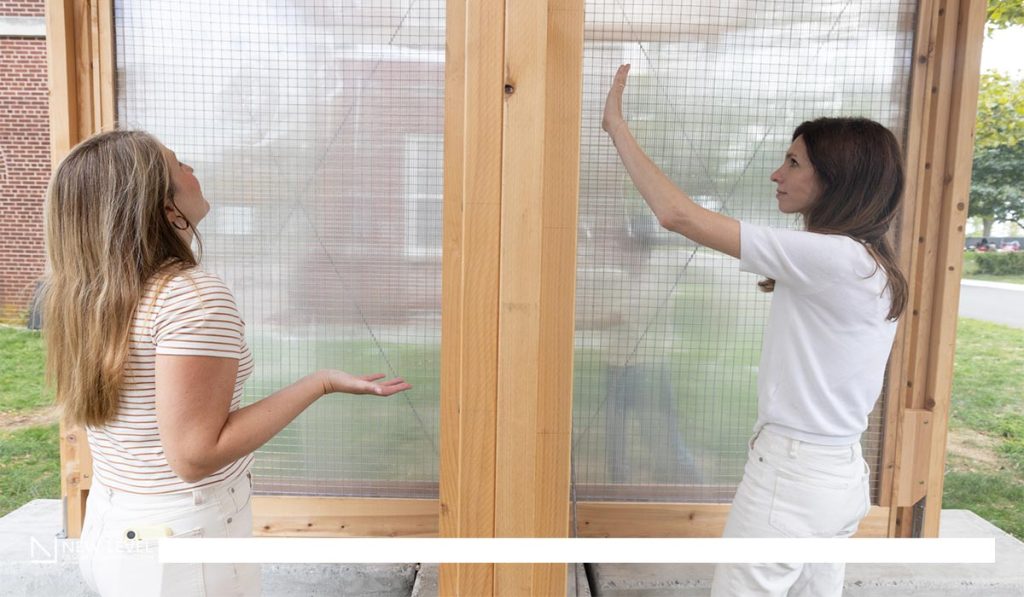
“Architecture and the construction industry must move from being contributors to climate change to becoming active agents of resilience and adaptation. With KlimaKover, we’re showcasing how design thinking, material innovation, and interdisciplinary collaboration can create new typologies that respond to heat without exacerbating energy demand.” — Kritika Kharbanda
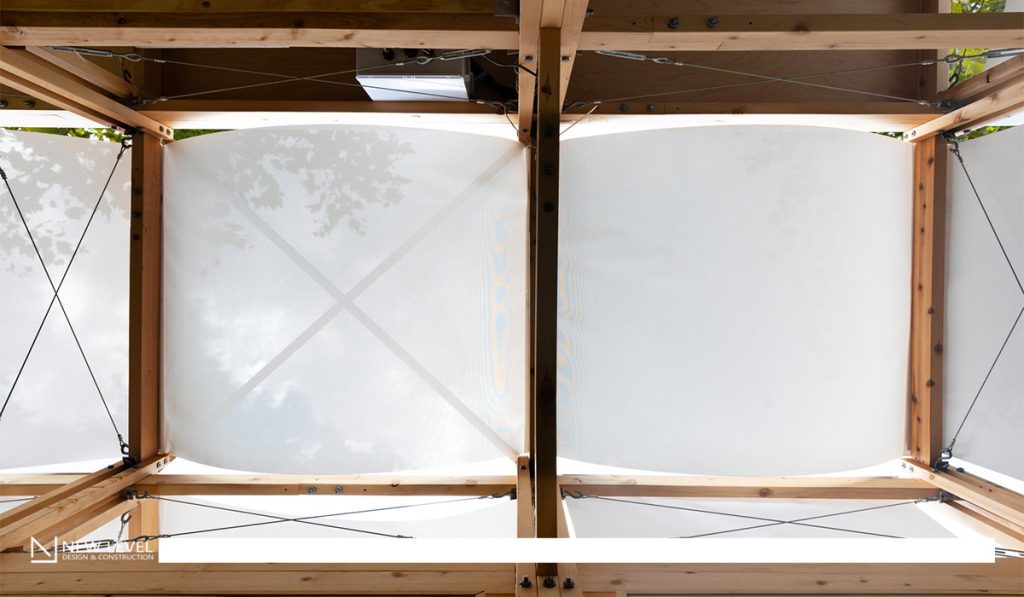
At a time when cooling is no longer optional but essential for survival, initiatives like KlimaKover offer a vision of adaptation rooted not in more machines, but in smarter, fairer, and more resource-efficient design. This represents a crucial shift in focus, moving beyond the hermetically sealed, air-conditioned building to address thermal comfort in the public realm where communities gather and live. As a prototype for a new kind of public infrastructure, it provides a tangible answer to the urgent questions facing designers today: How can architecture actively enhance urban resilience? And how can we create spaces that are both sustainable and socially equitable?
Rethinking Urban Cooling: A Case for Low-Energy Radiant Technology – ArchDaily